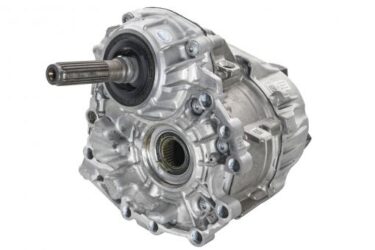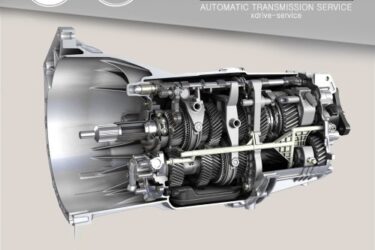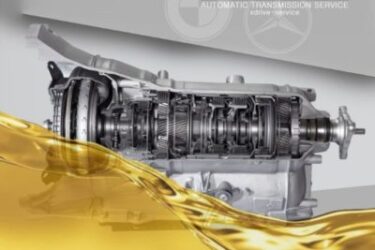Fluid change in automatic transmission
Fluid change in automatic transmission
We offer an oil change in automatic transmissions in 2 methods:
– Static method
Static fluid change consists of draining the oil from the box with a drain plug or an oil sump. When there is no drain plug,
remove the oil filter (if it is under the oil sump) and wait some time for a free oil leak. This procedure does not ensure
replacement of the entire volume of oil used. Typically, the exchange is subject to a maximum of 60% of the total oil in the
system. In case of excessive oil consumption, after starting the engine, when the oil pump of the box starts to work, the old
oil mixes with the new oil, which causes a slight improvement of the oil’s properties.
– Dynamic method
Dynamic fluid change in the automatic transmission consists in replacing the entire volume of oil used in the system. The oil
is removed from the converter, control valve assembly, actuators, conduits, ducts, pump, radiator and bowl. The dynamic
exchange is performed with a specially designed device. After connecting the device to the oil fill and oil return port from the
cooler, we perform:
– rinsing the entire system with a cleaning agent with a small amount of fresh oil,
– removing the old oil together with the cleaning agent, while introducing fresh oil, as a result of which we consume approx.
2-4 liters more than for static method
We buy damaged transfer cases and actuators
We buy damaged transfer cases and actuators
We buy transfer cases:
BMW x-Drive
ATC 35L, ATC 300, ATC 350
ATC45L, ATC 400, ATC 450
ATC 500
ATC 700
Mercedes 4Matic:
W164, W166 ( without Off Road Package)
We buy actuators of transfer cases BMW x-Drive
ATC 300
ATC 400
ATC 500
ATC 700
Regeneration of xDrive transfer cases
Regeneration of xDrive transfer cases
xDrive why are they spoiling? Common symptoms and causes of damage.
Thanks to the BMW xDrive all-wheel drive system, each axle uses its traction to the maximum. Your BMW
ensures stable cornering. If it is necessary to transfer more force to the road – especially during difficult
driving conditions – the Dynamic Stability Control System (DSC) enters the action. In addition to improving
traction, the system also recognizes the first signs of over- and understeer. In a fraction of a second, it
transfers up to 100% of the engine’s power to the front or rear axle via the gearbox and the electronically
controlled multi-disc clutch, then returns to the standard 40:60 ratio. Thanks to this technology, the four-
wheel drive system has all the benefits of rear-wheel drive. Provides precise handling, optimum cornering
and a clear separation between the engine and the steering.
Causes of damage to the transfer case
In addition to the above-mentioned benefits, the xDrive system sooner or later begins to fail. The VTG
switchbox (reducer) corresponds to the incorrect operation of the 4 × 4 drive system, but why it breaks
down? The answer is simple – because it is to be broken, the limit of strength of such a chest usually does
not exceed 200,000 km. Damage can take place much earlier, for ex. thanks to the inappropriate choice of
tires, as well as oil, insufficient quantity, or lack thereof. At this point it is worth noting that oil should be
changed every 50-60 thousand km in the distribution box. When deciding on a BMW xDrive, always install 4
tires from the same manufacturer. Tires of the same tread height are best according to manufacturer’s
recommendations. Incorrectly matched tires or unevenly worn between the front and rear axles by up to 2
mm! They will cause jerking which directly affects the reduction of the regulator.
It should be remembered that the transfer case is only switched on during the drive. If you feel jerking when
you release the gas – “holding” the car, the box may not have been damaged and it is the fault of tires only. In
the case when “jerking” occurs while driving, i.e. adding gas, starting, turning, driving at the roundabout, etc.
This is an obvious defect of the reducer provided that other mechanical defects are ruled out.
Another typical symptom of a damaged box is a “howl” caused by damage to the clutch basket bearings. The
most common defect is the 4 × 4 lights, abs, the handbrake. In most cases, they indicate damage to the
gearbox actuator (mechanical or electrical damage). We know from experience that the regeneration of the
actuator usually helps for a short time, which results in refurbishment of the distribution box.





